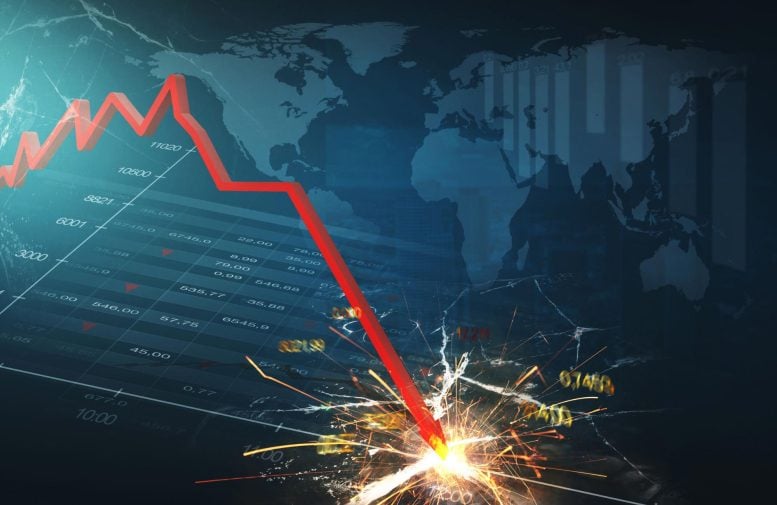
The study reveals that a coordinated attack was responsible for the TerraUSD crash.
A recent study published in ACM Transactions on the Web by researchers at Queen Mary University of London sheds new light on one of the most significant collapses in cryptocurrency history: the crash of the TerraUSD stablecoin and its sister token, LUNA. The research team uncovered evidence of suspicious, large-scale trading activity that may point to a coordinated effort to destabilize the ecosystem, triggering a rapid $3.5 billion loss in market value.
Led by Dr. Richard Clegg, the study uses temporal multilayer graph analysis, an advanced method for tracking dynamic and interconnected systems over time. By applying this technique to transaction data from the Ethereum blockchain, the researchers were able to trace complex relationships between cryptocurrencies and pinpoint how TerraUSD was systematically undermined through a series of calculated trades.
Stablecoins like TerraUSD are designed to maintain a steady value, typically pegged to a fiat currency like the US dollar. However, in May 2022, TerraUSD and its sister currency, LUNA, experienced a catastrophic collapse. Dr. Clegg’s research sheds light on how this happened, uncovering evidence of a coordinated attack by traders who were betting against the system, a practice known as “shorting.”
Suspicious Trading Patterns
“What we found was extraordinary,” says Dr. Clegg. “On the days leading up to the collapse, we observed highly unnatural trading patterns. Instead of the usual spread of transactions across hundreds of traders, we saw a handful of individuals controlling almost the entire market. These patterns are the smoking gun evidencing of a deliberate attempt to destabilize the system.”
The team’s analysis revealed that on key dates, just five or six traders accounted for nearly all the trading activity, with each controlling almost exactly the same share of the market. This level of coordination is virtually impossible by chance in a normal trading environment and strongly suggests that these individuals were working together to trigger the collapse.
New Tools for Understanding Market Risk
The research not only provides insights into the TerraUSD collapse but also introduces a powerful new tool for analyzing cryptocurrency markets. The team’s software, developed in collaboration with Pometry a spin-out company from Queen Mary University, uses graph network analysis to visualize and interpret complex trading data. This tool could prove invaluable for regulators, investors, and researchers seeking to understand and mitigate risks in the volatile world of cryptocurrency.
“Cryptocurrencies are often seen as the Wild West of finance, with little oversight and even less accountability,” says Dr. Clegg. “Our work shows that by applying rigorous mathematical techniques, we can uncover the hidden patterns and behaviors that drive these markets. This isn’t just about understanding what went wrong in the past — it’s about building a safer, more transparent financial system for the future.”
The implications of this research extend far beyond the world of cryptocurrency. The methods developed by Dr. Clegg and his team could be applied to a wide range of complex systems, from financial markets to social networks. For regulatory agencies, this work offers a new way to monitor and safeguard against systemic risks, protecting both individual investors and the broader economy.
Reference: “Investigating the Luna-Terra Collapse through the Temporal Multilayer Graph Structure of the Ethereum Stablecoin Ecosystem” by Cheick Tidiane Ba, Ben Steer, Matteo Zignani and Richard Clegg, 29 January 2024, ACM Transactions on the Web.
DOI: 10.1145/3726869







